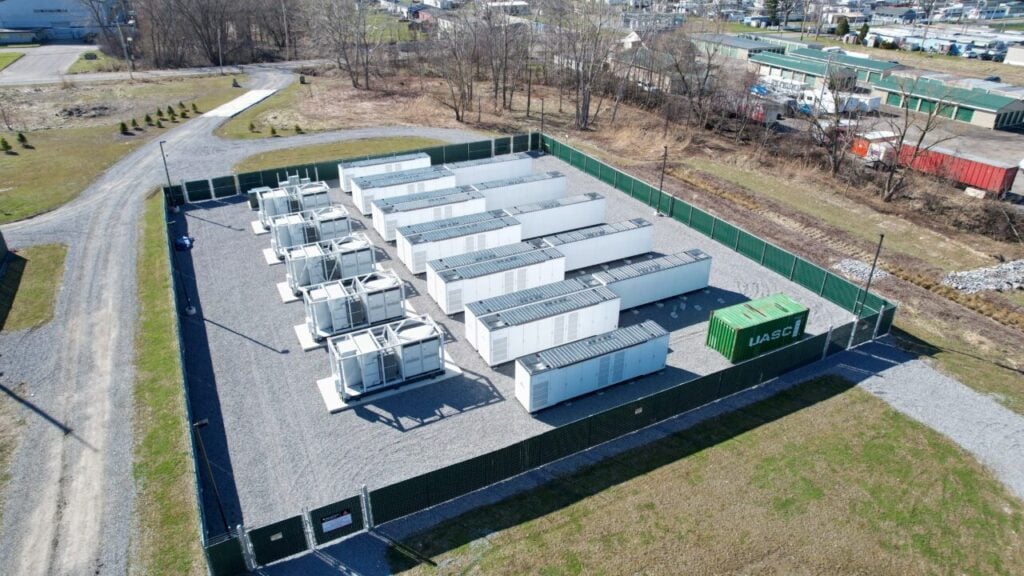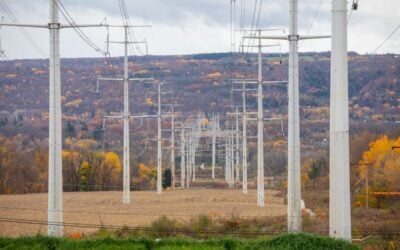
Applications are invited in New York for the state’s first competitive solicitation for a gigawatt of grid-connected energy storage facilities.
Kathy Hochul, the governor of the East Coast US state, announced the launch of the first of three Bulk Energy Storage requests for proposals (RfPs) earlier this week (28 July).
Defining ‘bulk storage’ as projects with at least 5MW output, the procurement is intended to significantly contribute to achieving New York’s 6GW by 2030 energy storage deployment target.
The opportunity is now open for developers through the first step, which will evaluate project eligibility, before successful applicants are invited to present bid proposals for evaluation of projects.
Try Premium for just $1
- Full premium access for the first month at only $1
- Converts to an annual rate after 30 days unless cancelled
- Cancel anytime during the trial period
Premium Benefits
- Expert industry analysis and interviews
- Digital access to PV Tech Power journal
- Exclusive event discounts
Or get the full Premium subscription right away
Or continue reading this article for free
The programme administrator, New York Energy Research and Development Authority (NYSERDA), will accept proposals until 3pm EST, 4 September.
NYSERDA is a state-owned public benefit corporation which carries out programmes to accelerate clean energy and energy efficiency adoption in New York, including renewable energy and energy storage procurements.
NYSERDA was ordered to create the bulk storage programme by the New York Public Service Commission (PSC) as the regulator approved Energy Storage Roadmap 2.0 in June 2024, the plan to guide the state towards its 6GW target as part of the Climate Protection and Community Leadership Act (CLCPA) legislation.
CLCPA also set out targets for New York to reach 70% renewable energy by 2030 and 100% emissions-free electricity by 2040. The roadmap created by NYSERDA staff with the New York Department of Public Service, meanwhile, followed the 2018 Roadmap 1.0.
Creating investment pathways for large-scale storage was among its objectives after the first roadmap, which found some success with upfront incentive programmes for residential and ‘retail’ aka commercial and industrial (C&I) storage systems under 5MW, struggled to inspire buildout of some 1.3GW of projects awarded under its Bulk Market Bridge Acceleration Program.
The regulatory PSC approved the draft Bulk Energy Storage Program Implementation Plan proposed by NYSERDA in March.
“Today’s action is another example of New York’s ongoing commitment to strengthening our grid, ensuring the state continues to have a more affordable and reliable electricity system now and well into the future,” Hochul said of the programme’s launch on Monday.
“Safe and strategic deployment of energy storage will help drive economic development and reduce costs for New Yorkers.”
How it will work
The programme is being run as a series of annual competitive solicitations for a mechanism called the Index Storage Credit. The mechanism involves NYSERDA setting a guaranteed strike price for playing stored energy into NYISO electricity markets.
First reported by Energy-Storage.news in September 2022 as NYSERDA VP for distributed energy resources (DERs) David Sandbank presented an outline at the RE+ trade show, the idea is to encourage investor certainty with stable revenue streams.
The strike price will be agreed upon based on NYSERDA’s modelling and what the developer expects to earn monthly from market participation.
If the project earns more than the strike price, stakeholders pay back the difference to NYSERDA. If revenues fall below it, NYSERDA tops up the revenues. This will happen over the project’s 15-25-year lifetime.
NYSERDA president and CEO Doreen Harris, and VP for large-scale renewables Georges Sassine introduced the scheme in detail in an Energy-Storage.news webinar held in early April.
Sassine explained that although the original bulk storage incentive scheme programme led to more than a gigawatt of awarded projects, NYSERDA saw a “lot of attrition” and realised that upfront payments were often “not enough to make a project’s economics work over the lifetime of the project.”
“This is why we’ve created this new bulk energy storage programme, based on a very unique incentive and that’s leveraging our experience in New York at NYSERDA in running large-scale procurements, and putting these two together is really going to make a critical and vital step in helping us achieve the 6GW goal that we have,” Sassine said.
For instance, the Index Storage Credit is modelled on the NYSERDA Index Renewable Energy Credit (REC) and Offshore Wind Renewable Energy Credit (OREC) mechanisms.
With a 1GW procurement to be held each year, the programme will target awarding 20% of capacity to projects of 8-hour+ duration in each solicitation and target putting at least 30% of projects in New York City.
Fire Code updates adopted
Crucially, the programme incorporates new recommended rules for energy storage system fire safety, which the New York State Inter-Agency Fire Safety Working Group (FSWG) has formulated over the past year.
The FSWG recommended updates as well as additions to the existing Fire Code of NY (FCNY), which was first revised to accommodate energy storage technologies in 2020.
They include requirements for industry-funded peer review of lithium-ion BESS installations that exceed certain capacity thresholds, the availability of staff with knowledge specific to BESS installations available within 15 minutes of an incident and for all BESS projects to have Emergency Safety Response Plans in place, among others.
The changes were adopted last week into the Uniform Code by the State Fire Prevention and Building Code Council. These will take effect at the beginning of 2026, but NYSERDA has integrated the recommendations into its programmes to support residential, retail and bulk energy storage.





